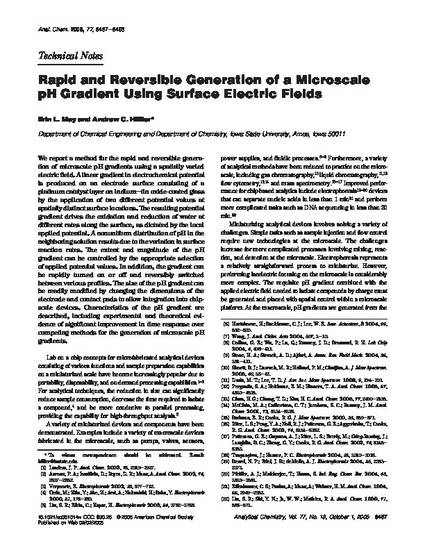
We report a method for the rapid and reversible generation of microscale pH gradients using a spatially varied electric field. A linear gradient in electrochemical potential is produced on an electrode surface consisting of a platinum catalyst layer on indium−tin oxide-coated glass by the application of two different potential values at spatially distinct surface locations. The resulting potential gradient drives the oxidation and reduction of water at different rates along the surface, as dictated by the local applied potential. A nonuniform distribution of pH in the neighboring solution results due to the variation in surface reaction rates. The extent and magnitude of the pH gradient can be controlled by the appropriate selection of applied potential values. In addition, the gradient can be rapidly turned on or off and reversibly switched between various profiles. The size of the pH gradient can be readily modified by changing the dimensions of the electrode and contact pads to allow integration into chip-scale devices. Characteristics of the pH gradient are described, including experimental and theoretical evidence of significant improvement in time response over competing methods for the generation of microscale pH gradients.
Available at: http://works.bepress.com/andrew_hillier/38/

This article is from Analytical Chemistry77 (2005): 6487-6493, doi:10.1021/ac051014w. Posted with permission.